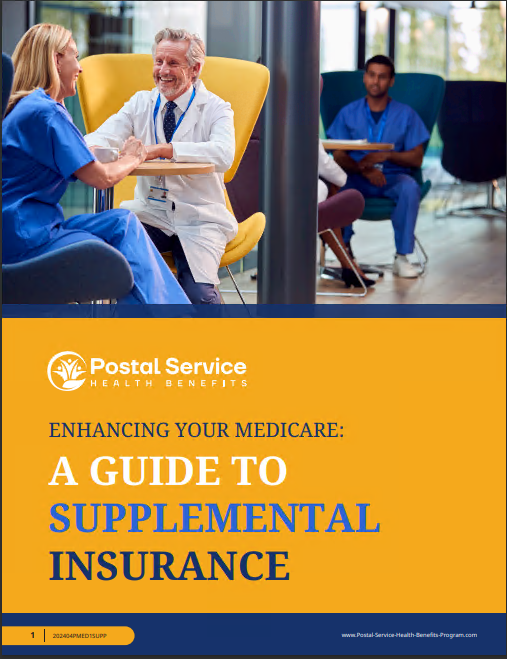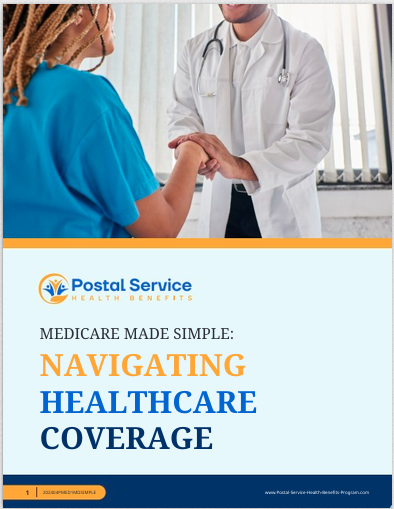Key Takeaways:
- USPS retirees must understand how FEHB, PSHB, and Medicare integrate to ensure comprehensive coverage and manage healthcare costs effectively.
- Regularly reviewing healthcare plans, utilizing preventive care, and effectively managing out-of-pocket costs can help retirees maximize their benefits and maintain their health.
Smart Healthcare Planning Tips for USPS Retirees
As a USPS retiree, it is essential to plan your healthcare carefully to ensure you have the coverage you need at a manageable cost. This guide provides valuable tips on understanding your options, maximizing your benefits, and effectively managing healthcare costs.
FEHB, PSHB, and Medicare
Understanding how the Federal Employees Health Benefits (FEHB) Program, the new Postal Service Health Benefits (PSHB) Program, and Medicare work together is essential for USPS retirees.
- FEHB Program: The FEHB Program offers various health plans, including Fee-for-Service (FFS) plans, Health Maintenance Organizations (HMOs), and High Deductible Health Plans (HDHPs). These plans cover a wide range of health services, from hospital stays to doctor visits and prescription drugs. USPS retirees have enjoyed the benefits of the FEHB Program, which offers extensive coverage and flexibility in choosing healthcare providers.
- PSHB Program: Starting in January 2025, the PSHB Program will replace FEHB for USPS employees, annuitants, and their eligible family members. This new program is tailored specifically for USPS members and aims to provide comprehensive coverage. One significant change with PSHB is the requirement for Medicare Part B enrollment for eligible retirees. This integration ensures that retirees receive coordinated benefits, reducing out-of-pocket costs and improving overall coverage.
- Medicare: Medicare is a federal program providing health insurance primarily for people aged 65 and older. It includes Part A (hospital insurance), Part B (medical insurance), Part C (Medicare Advantage), and Part D (prescription drug coverage). Medicare Part A is usually premium-free if you have paid Medicare taxes for at least 10 years, while Part B requires a monthly premium. USPS retirees must enroll in Medicare Part B to be eligible for the PSHB Program.
By coordinating FEHB or PSHB with Medicare, retirees can minimize their healthcare costs and ensure comprehensive coverage. Understanding how these programs interact can help retirees make informed decisions about their healthcare.
Annual Reviews & Preventive Care
Regularly reviewing your healthcare plans and taking advantage of preventive care services can significantly enhance your health and financial well-being.
- Annual Plan Review: Each year, during the open enrollment periods for both FEHB (and later PSHB) and Medicare, review your healthcare plans to ensure they still meet your needs. This is an opportunity to compare different plans and switch if another plan offers better coverage or lower costs. Changes in your health status, medications, or financial situation can affect which plan is best for you, so it’s important to reassess your options annually.
- Preventive Care: Utilizing preventive care services can help detect health issues early, reducing the need for more extensive and costly treatments later. Medicare and FEHB/PSHB plans cover various preventive services, including annual wellness visits, screenings, and vaccinations. Preventive care not only helps maintain your health but can also lead to early detection and treatment of potential health issues, improving your overall quality of life and reducing long-term healthcare costs.
Taking a proactive approach to your health by regularly reviewing your plans and using preventive services can lead to better health outcomes and lower healthcare costs. Ensure you are aware of the preventive services covered by your plan and make use of them regularly.
Managing Costs
Effectively managing healthcare costs involves understanding your plan’s cost-sharing mechanisms and considering additional options like Health Savings Accounts (HSAs) and supplemental insurance.
- Cost Sharing: Be aware of the premiums, deductibles, copayments, and coinsurance associated with your health plan. Understanding these costs helps you budget more effectively and avoid unexpected expenses. For example, while Medicare Part B has a standard monthly premium, your total out-of-pocket costs can vary based on your plan’s specific terms. Comparing these costs across different plans during open enrollment can help you find the most cost-effective option.
- HSAs: If you have a high-deductible health plan (HDHP), consider contributing to a Health Savings Account (HSA). HSAs offer tax advantages and can be used to pay for qualified medical expenses, providing a financial cushion for healthcare costs. Contributions to an HSA are tax-deductible, and withdrawals for eligible medical expenses are tax-free. HSAs can be an excellent way to save for future healthcare expenses and reduce your overall tax burden.
- Supplemental Insurance: Supplemental insurance plans, such as Medigap, can help cover out-of-pocket costs not paid by Medicare. These plans can provide additional financial security by covering copayments, coinsurance, and deductibles. Medigap policies are standardized and sold by private companies, making it easier to compare benefits and costs. Having a Medigap plan can give you peace of mind by capping your out-of-pocket expenses, ensuring you have financial protection against unexpected medical costs.
By managing your healthcare costs carefully, you can maintain your financial stability and ensure that you have the resources needed for your healthcare. Regularly reviewing your expenses and planning for future costs can help you stay on top of your finances and avoid surprises.
Open Enrollment
Navigating the open enrollment periods for FEHB (and later PSHB) and Medicare is crucial for maintaining optimal healthcare coverage.
- FEHB/PSHB Open Season: The open season for the FEHB Program, and later the PSHB Program, typically occurs annually in the fall. During this period, you can enroll in or change your health plan. Reviewing your options during this time is essential to ensure you have the best coverage for your needs. The transition to the PSHB Program in 2025 will require additional attention to ensure you understand the new plan options and requirements.
- Medicare Open Enrollment: Medicare’s annual enrollment period runs from October 15 to December 7. During this time, you can join, switch, or drop Medicare Advantage or Medicare Part D plans. It’s crucial to review your Medicare options annually to ensure your plan covers your current healthcare needs. Changes in plan benefits, provider networks, and medication formularies can impact your decision, so take the time to compare your options carefully.
Being proactive during these enrollment periods ensures you have the most suitable and cost-effective health coverage. Keep track of key dates and make sure you review your plan options thoroughly to avoid any gaps in coverage or unexpected changes in benefits.
Comprehensive Health Coverage Insights
Navigating retirement as a USPS employee requires careful planning and understanding of your healthcare options. The transition from FEHB to PSHB, the integration with Medicare, and the consideration of supplemental insurance are all crucial steps in ensuring comprehensive coverage.
By staying informed, utilizing preventive care, and effectively managing costs, you can maximize your health benefits and enjoy a secure and healthy retirement. Regularly review your healthcare plans, take advantage of preventive services, and be proactive during open enrollment periods to ensure you have the best coverage for your needs.
Conclusion
Smart healthcare planning for USPS retirees involves understanding the nuances of FEHB, PSHB, and Medicare, along with effectively managing costs and navigating open enrollment periods. By taking a proactive approach to your healthcare, you can ensure comprehensive coverage, minimize out-of-pocket expenses, and maintain your health throughout retirement.
Contact Information:
Email: [email protected]
Phone: 7025558901







